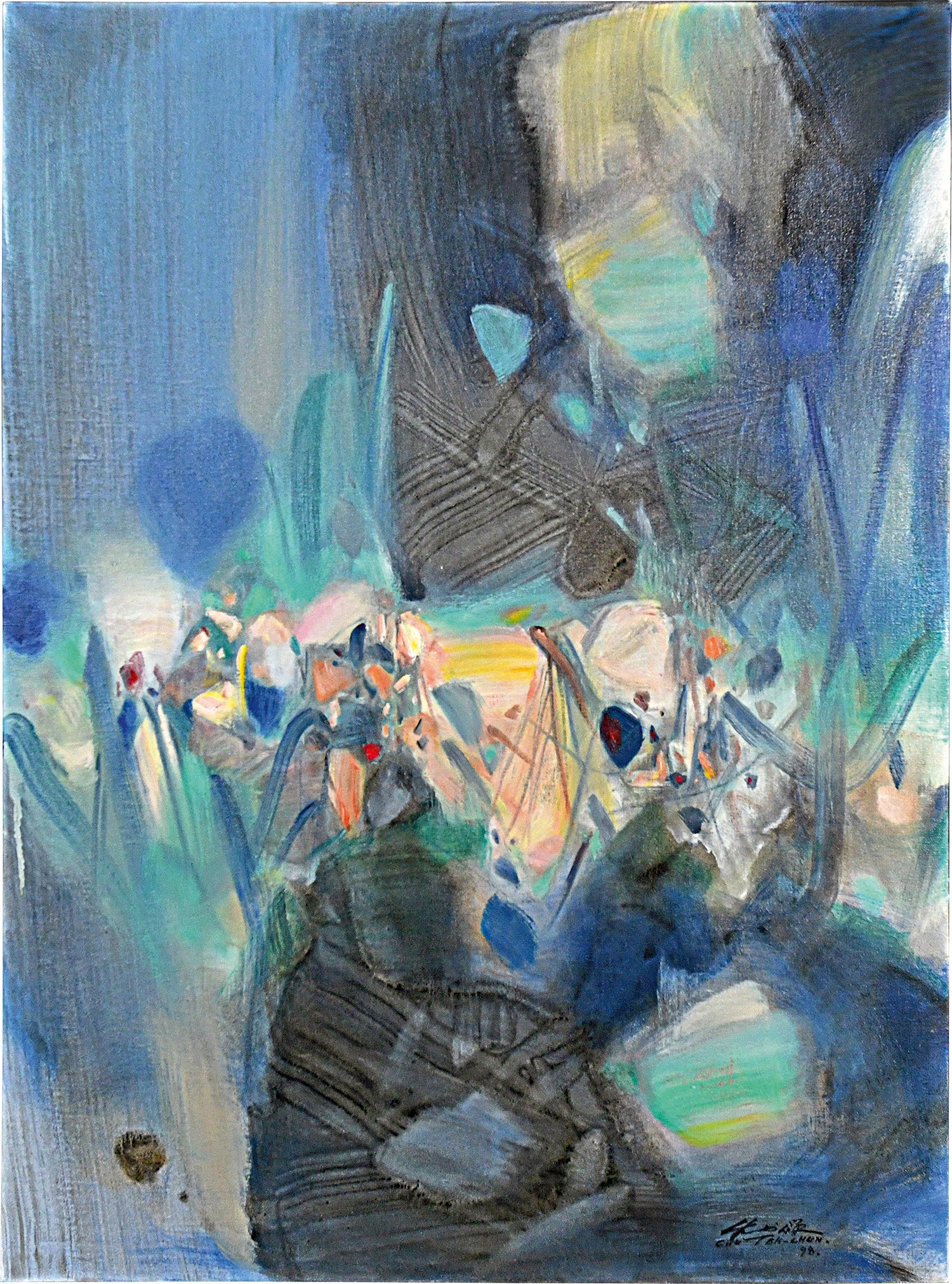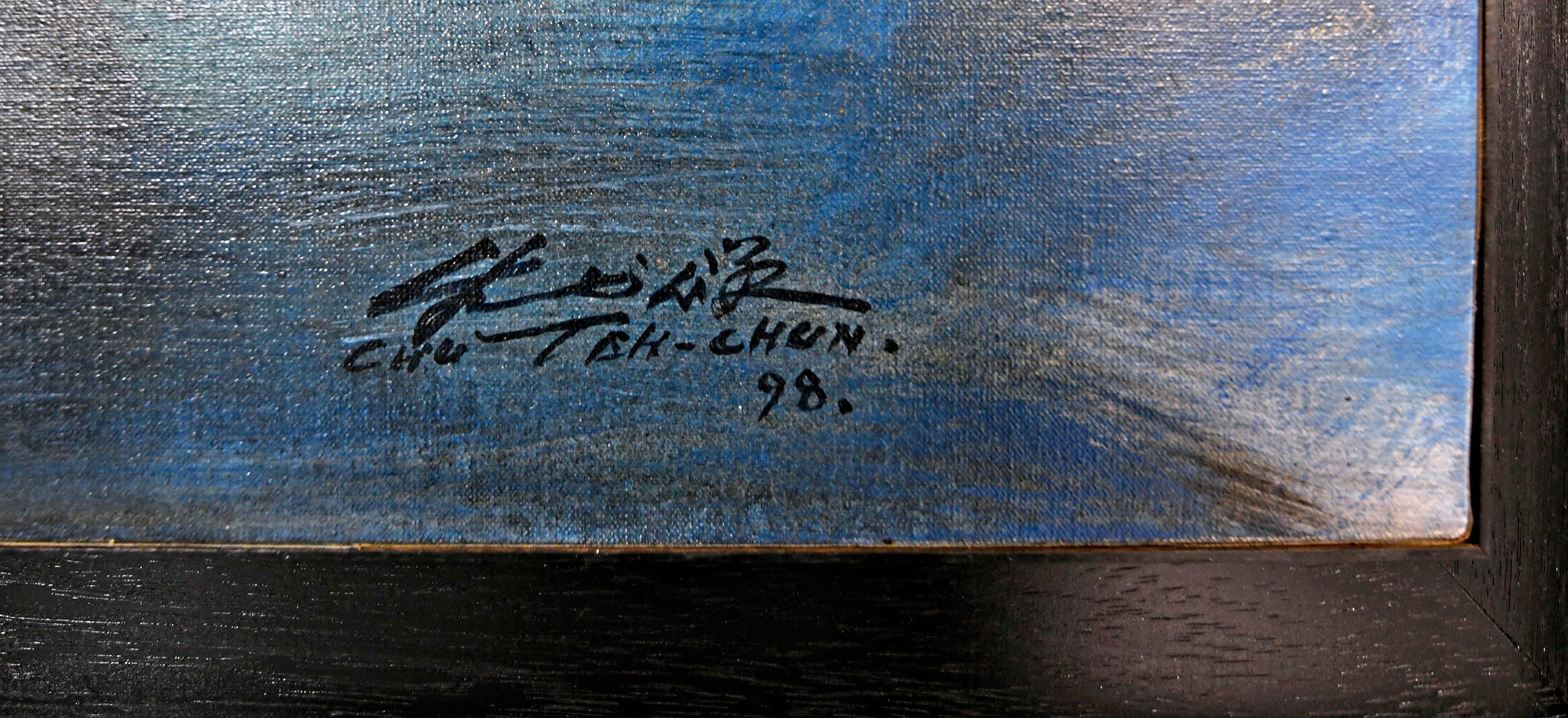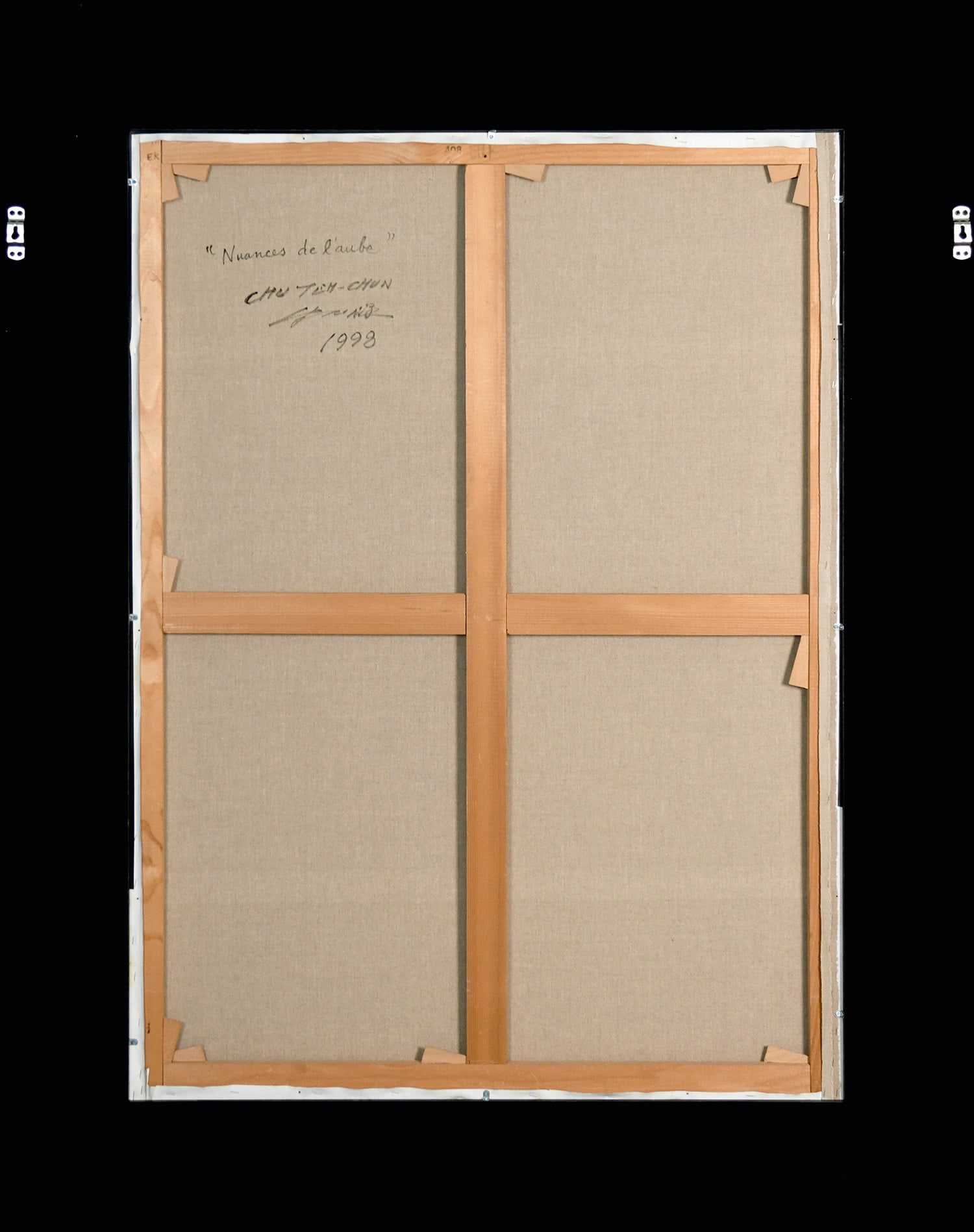







31
Chu Teh-Chun
Nuances de l'aube
signed and dated 'CHU TEH-CHUN. [in Chinese and Pinyin] 98.' lower right; further signed, titled and dated '"Nuances de l'aube" CHU TEH-CHUN [in Pinyin and Chinese] 1998' on the reverse
oil on canvas
130 x 97 cm. (51 1/8 x 38 1/4 in.)
Painted in 1998, this work will be accompanied by a certificate of authenticity signed by the artist's wife, Chu Ching-Chao. This work will be included in the artist's forthcoming catalogue raisonné on the work of Chu Teh-Chun, being prepared by Fondation Chu Teh-Chun. (Information provided by Fondation Chu Teh-Chun and Mrs Chu Ching Chao.)